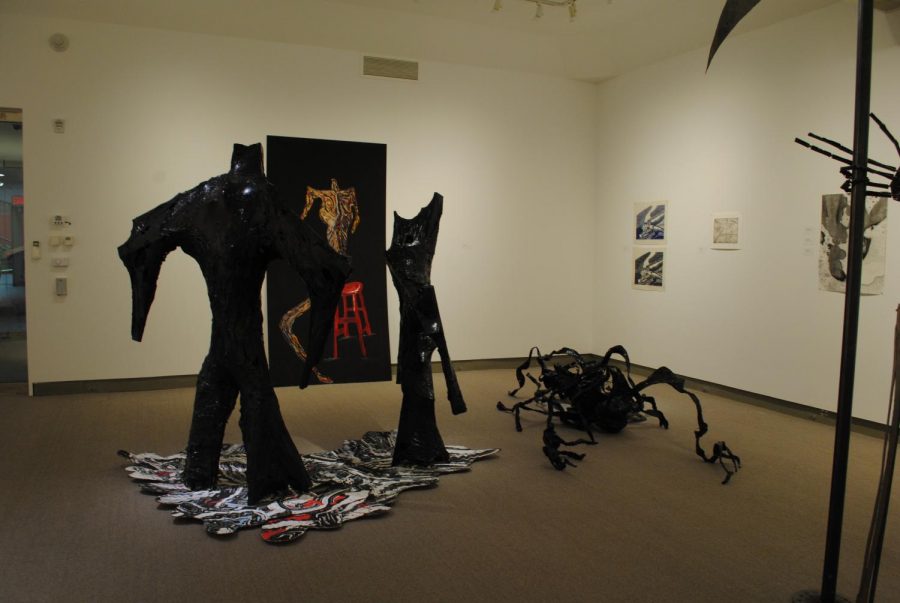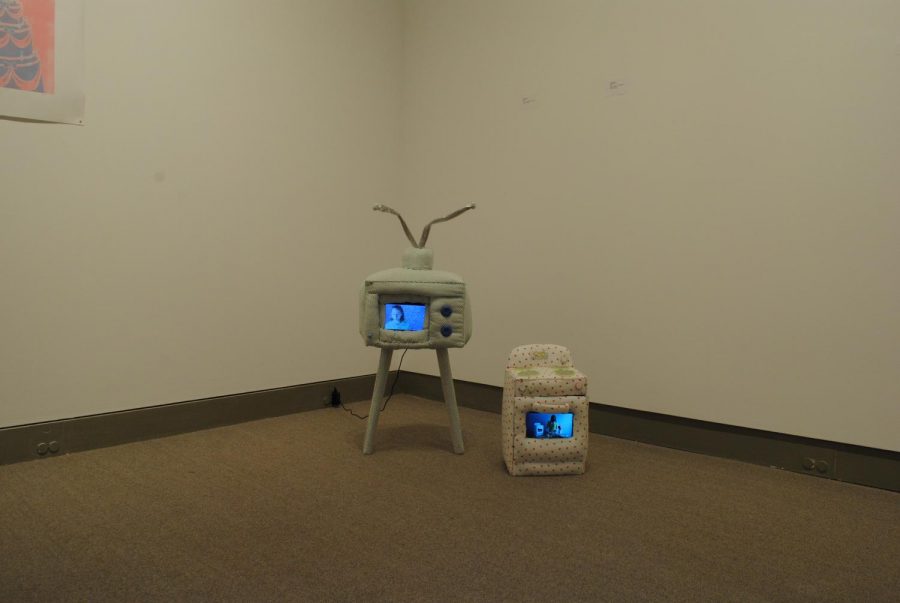The spectacular Soeffker Gallery
Hamline’s Senior Thesis Exhibition is a showcase of the studio art and art history graduates’ talents, and this year the graduates are tackling the tumultuous past year of 2020 head on.
Leo Cathryn Salis
Senior Helen Dolan creates quiet and vulnerable spaces
using multiple mediums, including hand embroidery.
May 14, 2021
The quarantine summer’s effect on art can be felt in all mediums, and yet visual art has especially seen its influences and style changed due to the ever-present subject of the COVID-19 pandemic.
Senior Helen Dolan’s work is a subversive take on femininity and societal standards. Dolan’s artist statement says “by creating private, intimate spaces, such as bedrooms and bathrooms, I showcase the power of quiet vulnerability.”
“I unravel and everything gets kinda crazy in the end,” Dolan said. “Mainly, the work I do is concentrated in textiles and fiber sculpture. So I do a lot of soft sculpture work and it involves a lot of upholstery, sewing, and I do a lot of hand embroidery. I do a lot of mixed media sculpture.”
‘Quiet vulnerability’ is especially a poignant theme in Helen Dolan’s work, as she examines her own mental state in quarantine through a lens of visual art.
“Those intimate private moments when it’s just you and yourself. I find it interesting when we’re in lockdown and home with ourselves the amount of solitude and Snapchats of that solitude,” Dolan said. “I wanted to capture the intimate moments hidden from public view. It’s melancholy in a way, but also really appears happy on the outside.”
Dolan’s piece, “Stacked Houses,” is made out of wood and kraut. It’s a testament to the idea of intimacy and vulnerability Dolan seeks to achieve through her work.
“When you enter the gallery there are three rooms on top of each other and I furnished them. That piece was the start of exploring quiet vulnerability,” Dolan said.
Another sculptor, senior Elsie Gray, is tackling their own experiences with body image through their work. In her artist statement, Gray mentions using “materials such as steel, wire, wood and melted trash bags to illustrate the internal physicalities of body dysmorphia.”
“My main priority was to draw attention to eating disorders and how it emaciates the body and mind,” Gray said. “Tackling female beauty standards. In my work, I use a lot of garbage bags because I know that feeling of garbage.”
Working with wood and wire was an easy decision for Gray, who has skill with bending materials for her own usage. Especially when it comes to making art that comments on ‘thinness.’
“I usually like to work with cheap wiring you can get at Home Depot to get it as thin as possible,” Gray said. “One of my pieces I used wood, and I made an adult and a mini version symbolizing having illnesses or difficulties in your life at any stage. I really like working with wood, but I really like working with wire as it emphasizes the idea of thinness a little more.”
The Soeffker Gallery displays monumental works from all sorts of landmark artists, but this year’s display has been a labor of love for the studio art students, whose small-size graduating class highlights the dedication and talent needed to pursue the craft they work on.

Senior Elsie Gray used melted trash bags to form figures representing experiences with body dysmorphia.





